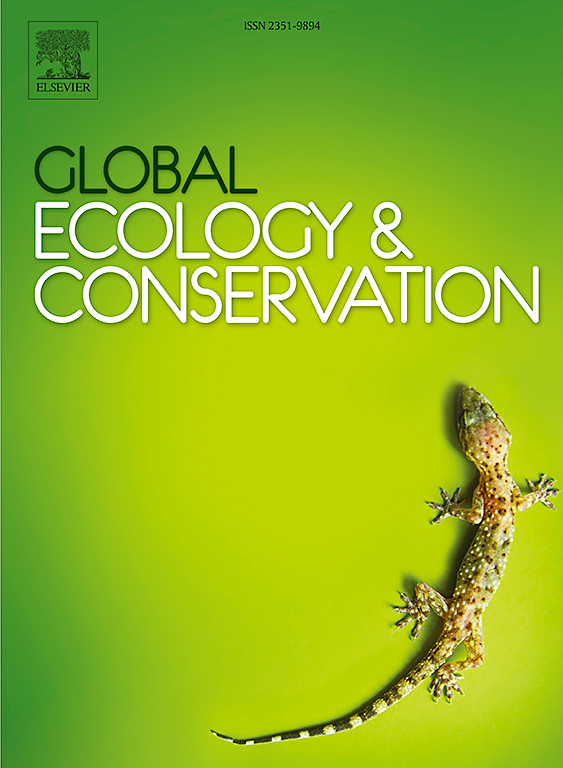平衡证据并减少夏威夷乌鸦“alalā”重新引入结果评估中的不确定性
IF 3.4
2区 环境科学与生态学
Q1 BIODIVERSITY CONSERVATION
引用次数: 0
摘要
在保护迁移的过程中,评估释放结果对于制定未来计划至关重要。然而,放归计划往往受到可以释放的动物数量的限制,这降低了实验洞察力的潜力。最近发布的野生灭绝物种夏威夷鸦(Corvus hawaiiensis)凸显了这一困境。作为夏威夷群岛上仅存的鸦科物种,alalwa是重要的种子传播者,但目前在保护育种设施中仅存活在一个小种群中。在我们努力了解影响2016-2020年alalā释放工作成功和失败的因素的过程中,我们探索了各种数据集和分析,以评估在实验框架之外哪些管理行动和生态因素导致了释放后死亡率。具体来说,我们探讨了围绕社会竞争、补充食物减少、补充喂食器的缺点和捕食对最近释放结果的影响的竞争假设。使用多方面的发布后监测数据集,我们能够减少一些不确定性,这些不确定性围绕着“alalā”在哪里和为什么死亡,以及什么可能使它们更容易死亡。我们发现,在减少补充食物的时候,死亡风险最高,随着更多的“alalal”过渡到成年期的领土行为特征,死亡风险也会增加。然而,这两种风险因素的机制仍然不确定,因为体重过轻、空间利用或食物消费的变化并不能解释为什么许多鸟类最终死于捕食、没有康复或遭受多因素死亡(例如状况不佳或感染)。然而,这些分析强调,未来对补充食物减少和释放策略的改变可能会改善结果。在被动适应性管理的环境中,发布工作仍然可以从管理行为中学习,只要对小的发布群组进行足够的监控。本文章由计算机程序翻译,如有差异,请以英文原文为准。
Balancing evidence and reducing uncertainty in the evaluation of reintroduction outcomes in ‘alalā, the Hawaiian crow
Over the course of conservation translocations, evaluating release outcomes can be critical for shaping future plans. However, reintroduction programs are often constrained in the number of animals they can release, which reduces the potential for experimental insight. Recent releases of the extinct-in-the-wild ‘alalā (Corvus hawaiiensis) highlight this dilemma. As the last remaining corvid species of the Hawaiian Islands, ‘alalā are critical seed dispersers, yet currently survive only in a small population within conservation breeding facilities. In our efforts to understand the factors contributing to the successes and failures of the 2016–2020 ‘alalā release effort, we explored various datasets and analyses to evaluate which management actions and ecological factors contributed to post-release mortality outside of an experimental framework. Specifically, we explored competing hypotheses surrounding the influence of social competition, supplemental food reduction, drawbacks of supplemental feeders, and predation on the outcome of recent releases. Using a multifaceted post-release monitoring dataset, we were able to reduce some of the uncertainty surrounding where and why ‘alalā died and what may have made them more vulnerable to mortality. We found that mortality risk was highest during times of supplemental food reduction and increased as more ‘alalā transitioned to the territorial behavior characteristic of adulthood. However, the mechanism for either risk factor remains uncertain, because low body weight, and changes to space use or food consumption did not explain why many birds ultimately died from predation, were not recovered, or suffered from multifactorial deaths (e.g. poor condition or infection). Nevertheless, these analyses highlight that future changes to the supplemental food reduction and release strategy could improve outcomes. In the context of passive adaptive management, release efforts can still learn from management actions, given sufficient monitoring of small release cohorts.
求助全文
通过发布文献求助,成功后即可免费获取论文全文。
去求助
来源期刊

Global Ecology and Conservation
Agricultural and Biological Sciences-Ecology, Evolution, Behavior and Systematics
CiteScore
8.10
自引率
5.00%
发文量
346
审稿时长
83 days
期刊介绍:
Global Ecology and Conservation is a peer-reviewed, open-access journal covering all sub-disciplines of ecological and conservation science: from theory to practice, from molecules to ecosystems, from regional to global. The fields covered include: organismal, population, community, and ecosystem ecology; physiological, evolutionary, and behavioral ecology; and conservation science.
 求助内容:
求助内容: 应助结果提醒方式:
应助结果提醒方式:


